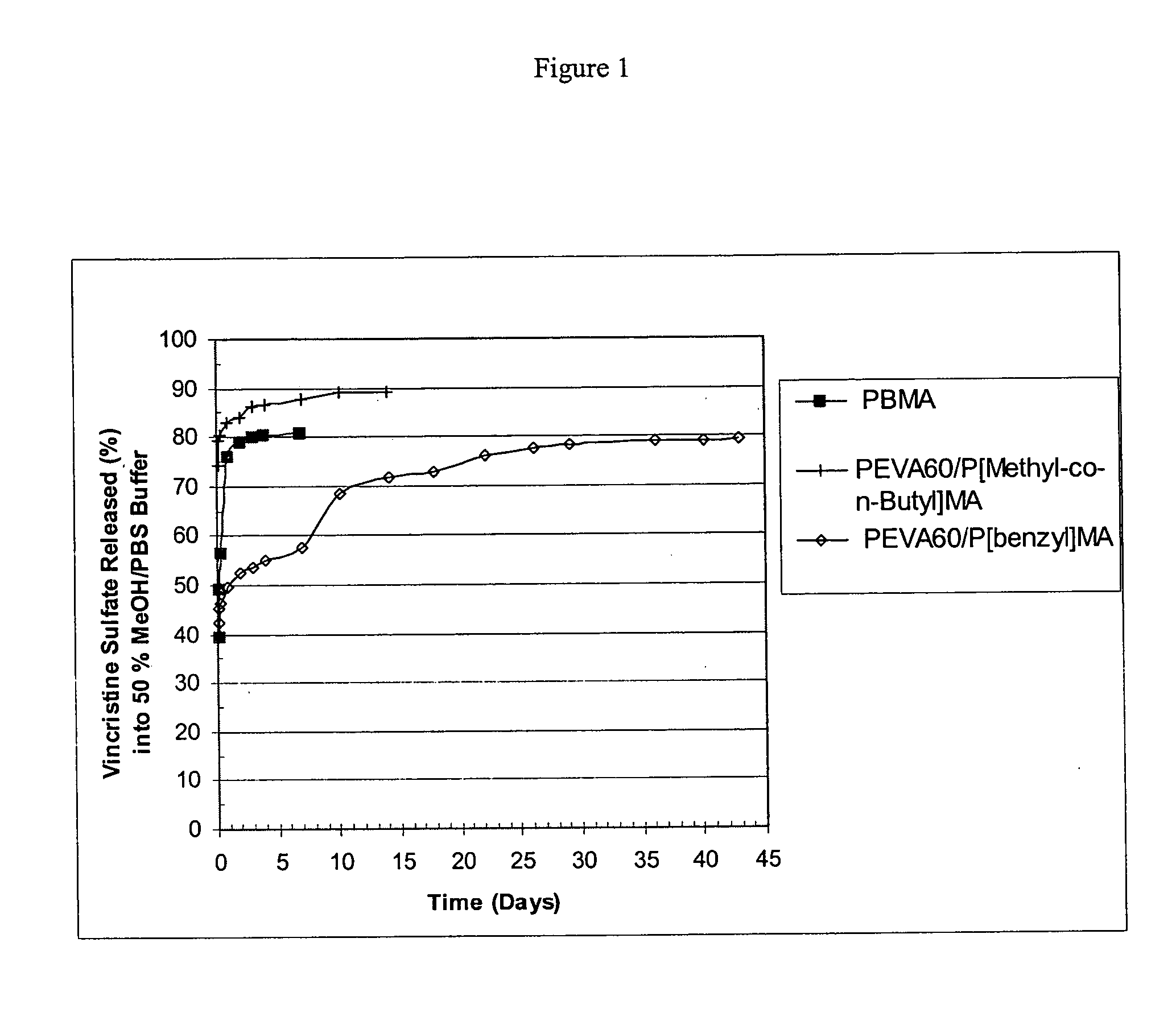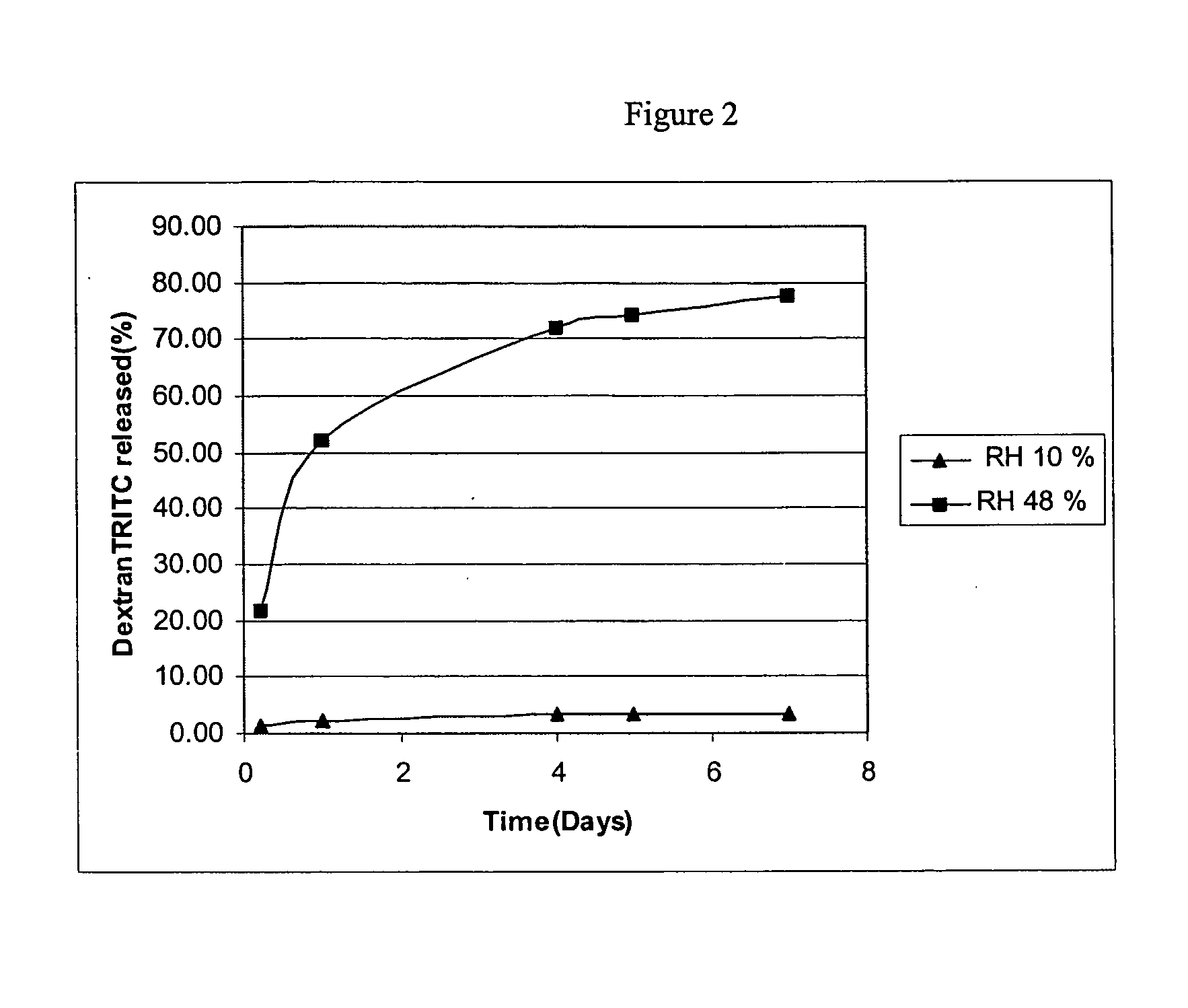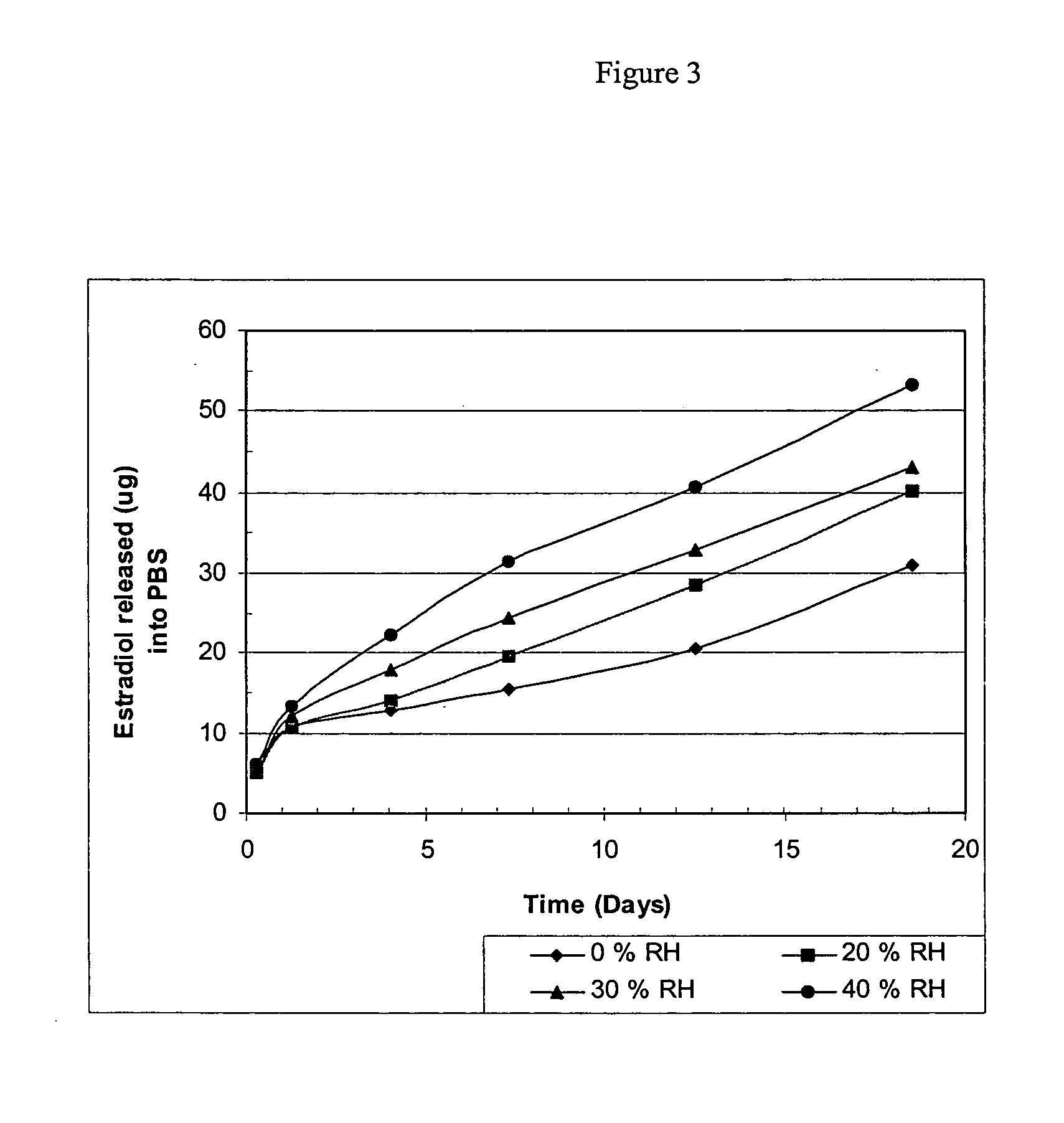Bioactive agent release coating and controlled humidity method
a technology of bioactive agents and humidity, which is applied in the direction of packaging foodstuffs, prostheses, catheters, etc., can solve the problems of increasing the risk of infection, and increasing the risk of fibrous encapsulation, so as to achieve more controllable and reproducible effects
- Summary
- Abstract
- Description
- Claims
- Application Information
AI Technical Summary
Benefits of technology
Problems solved by technology
Method used
Image
Examples
example 1
[0080] Three different polymer solutions, each at a concentration of 35 mg / ml, were prepared in 1,3-dioxolane in the manner provided below in order to provide coating compositions in the form of one part systems. The first solution contained poly(n-butyl methacrylate), with approximate weight average molecular weight of 337 kilodaltons; the second solution contained poly(ethylene-co-vinylacetate), with a vinyl acetate content of 60% (w / w) and poly(benzyl methacrylate) (“PEVA60 / P[benzyl]MA”), in a polymer ratio of (50 / 50% w / w), respectively. The poly(n-butyl methacrylate) and poly(ethylene-co-vinylacetate) were purified by extraction with organic solvents to remove impurities, e.g., monomer residues. The third solution contained poly(ethylene-co-vinylacetate) with a vinyl acetate content of 60% (w / w) and poly(methyl methacrylate-co-n-butyl methacrylate) (“PEVA60P[Methyl-co-n-Butyl]MA”), commercially available and known as poly(methyl methacrylate / n-butyl methacrylate), in a polymer r...
examples
Humidity Examples
[0087] Two examples are provided using two different bioactive agents, namely, β-estradiol, as an example of a low molecular weight bioactive agent that weighs 272 daltons, and tetramethylrhodamine isothiocyanate-Dextran (dextran-TRITC) as an example of a water soluble, high molecular weight bioactive agent that weighs 4400 daltons.
example 2
Solution Preparation—Dextran
[0088] Two solutions were prepared in order to provide a coating composition of the presently claimed invention in the form of a two part system. The first solution was an aqueous solution containing the bioactive agent, dextran-TRITC, at a concentration of 15 mg / ml. The second solution contained poly(ethylene-co-vinylacetate) with a vinyl acetate concentration of 33% (w / w) and poly(n-butyl methacrylate), with approximate weight average molecular weight of 337 kilodaltons. The poly(n-butyl methacrylate) and poly(ethylene-co-vinylacetate) were purified by extraction with organic solvents to remove impurities, e.g., monomer residues. The polymers of the second solution were dissolved in tetrahydrofuran at a concentration of 10 mg / ml.
[0089] Fifteen-millimeter diameter stainless steel discs with an overall thickness of two millimeters were fabricated with a nine-millimeter diameter flat pedestal. The pedestal had a surface area of 0.64 ...
PUM
| Property | Measurement | Unit |
|---|---|---|
| thickness | aaaaa | aaaaa |
| temperature | aaaaa | aaaaa |
| temperature | aaaaa | aaaaa |
Abstract
Description
Claims
Application Information
 Login to View More
Login to View More - R&D
- Intellectual Property
- Life Sciences
- Materials
- Tech Scout
- Unparalleled Data Quality
- Higher Quality Content
- 60% Fewer Hallucinations
Browse by: Latest US Patents, China's latest patents, Technical Efficacy Thesaurus, Application Domain, Technology Topic, Popular Technical Reports.
© 2025 PatSnap. All rights reserved.Legal|Privacy policy|Modern Slavery Act Transparency Statement|Sitemap|About US| Contact US: help@patsnap.com



